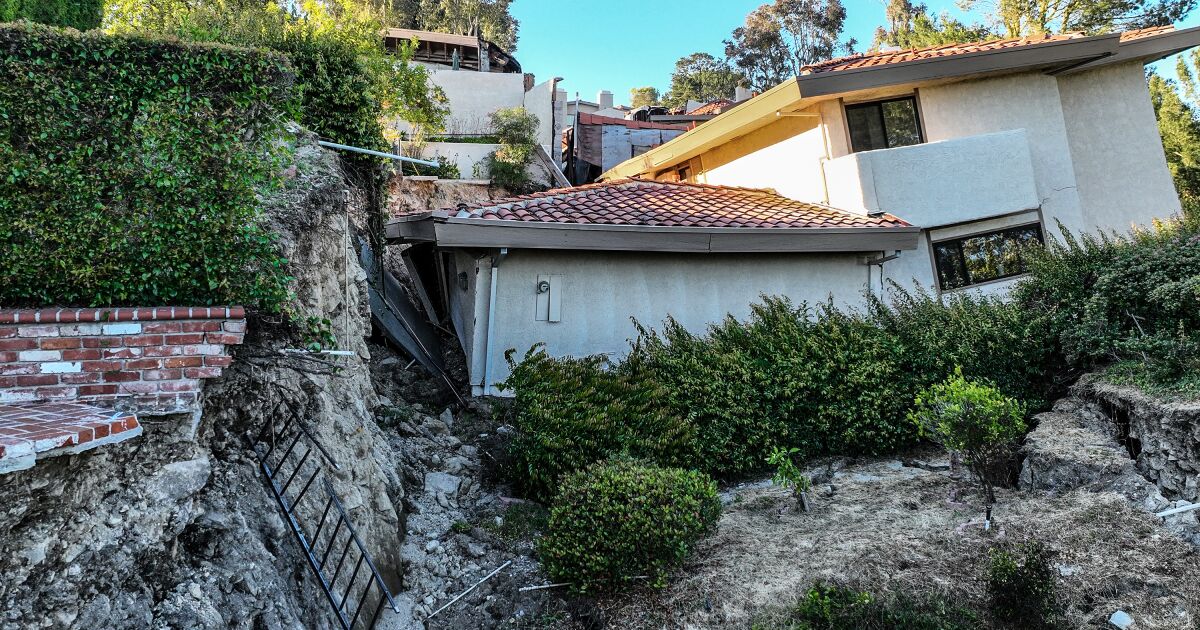Why won’t Newsom fix California’s ‘broken’ anti-housing environmental law?
In February, after yet another court decision stalling sorely needed housing development, Gov. Gavin Newsom declared that California’s landmark environmental law is “broken.”
The California Environmental Quality Act, known as CEQA, is supposed to protect the environment by requiring governments to study and mitigate any harms of development before they approve it. But as Newsom noted, CEQA has been “weaponized” by “wealthy homeowners” (among others) to block housing — often in the urban and suburban areas where people have the least environmental impact.
And housing isn’t all that’s on the line. To meet the state’s greenhouse-gas emission targets — and secure its share of federal green-energy funding — California needs to quickly approve wind and solar energy projects, electricity transmission lines, car-charging networks and mass transit. To that end, in May, the governor unveiled an 11-bill infrastructure package to “assert a different paradigm.” No longer would we “screw it up” with “paralysis and process.” Going forward, the state would commit itself to “results.”
Newsom’s bold rhetoric implied that big reforms were in the offing. But the package included only two incremental CEQA reforms, neither directed at housing.
One allows the governor to designate more “environmental leadership” projects for which the courts are supposed to wrap up any legal challenges within 270 days. If a case takes longer to resolve and remains stuck in legal limbo, however, the governor’s bill provides no legal remedy.
The other measure seeks to narrow the “administrative record” in CEQA cases. Often, compiling the administrative record — all the information involved in an environmental review that was available to the government and is germane to the court case — can result in extensive delays because it takes a long time to assemble all the required documents.
Newsom proposed to mitigate this problem by excluding from the administrative record “internal communications” within an agency that are not presented to the final decision-makers. This was a baby step.
And yet even this minor change elicited outrage from more than 100 organizations that call themselves environmentalist. They asserted, confusingly, that the governor’s reform would make it “prohibitively expensive and difficult to … assemble an administrative record, making judicial remedy something only the rich can afford.”
“This is ridiculous!” Newsom vented. Then he caved.
The language about internal agency communications was stripped from his bill before he signed it into law last week, replaced with a symbolic carve-out for “meeting invitations and scheduling communications” — which are never relevant to a CEQA case.
In sum, Newsom’s big push to reform a “broken” law won him a statutory right to implore judges to speed up a few more cases — and little else.
If you want to see what real reform looks like, look north. Washington state legislators voted overwhelmingly this year to eliminate environmental review for every urban housing project that conforms to a city’s general plan and zoning laws. Deep-green Oregon, meanwhile, never saw the need for a CEQA-like law. It adopted urban growth boundaries instead, preserving the countryside while allowing cities to approve new housing without the “paralysis” Newsom bemoaned.
Oregon and Washington, in other words, chose results.
Oddly, amid all the Sturm und Drang occasioned by the governor’s infrastructure package, Newsom has refrained from using his regulatory authority over CEQA. The law says the Governor’s Office of Planning and Research and the state Natural Resources Agency may refine and clarify CEQA’s often-vague requirements by issuing “guidelines.” New guidelines could bolster exemptions for urban and suburban housing, make new exemptions for electricity transmission or create a statewide environmental zoning map and calibrate the intensity of reviews according to the sensitivity of a given zone.
Yes, Team Paralysis would throw conniptions and file lawsuits. And many moons ago, a court did strike down an effort to streamline CEQA through the guidelines. But the California Supreme Court later disapproved of that decision.
The field belongs to the governor. If nothing else, an overhaul of the guidelines would set the agenda for the Legislature and the courts. If CEQA is truly broken, it’s surely worth taking some legal and political risks to fix it.
Chris Elmendorf is a professor of law at the UC Davis School of Law.

